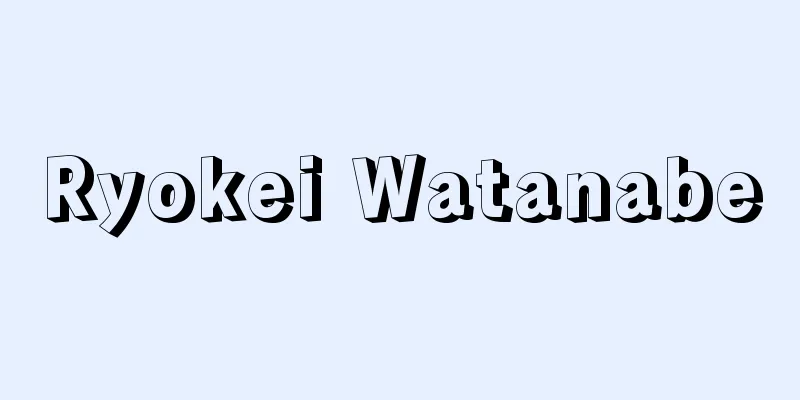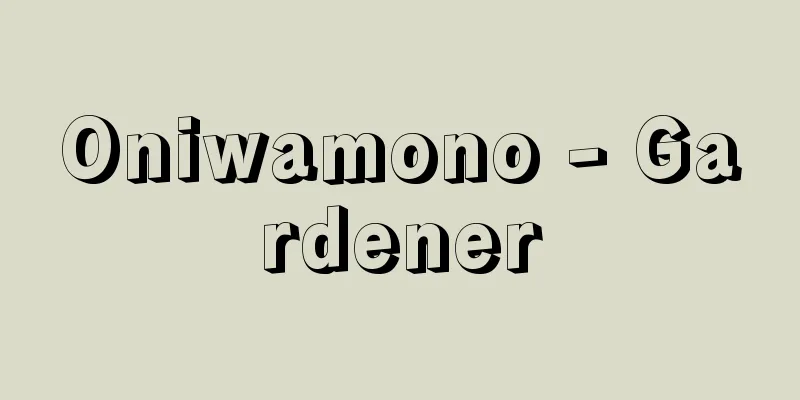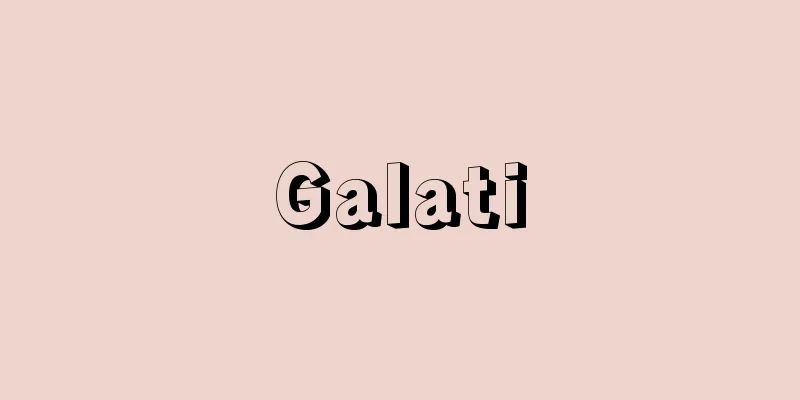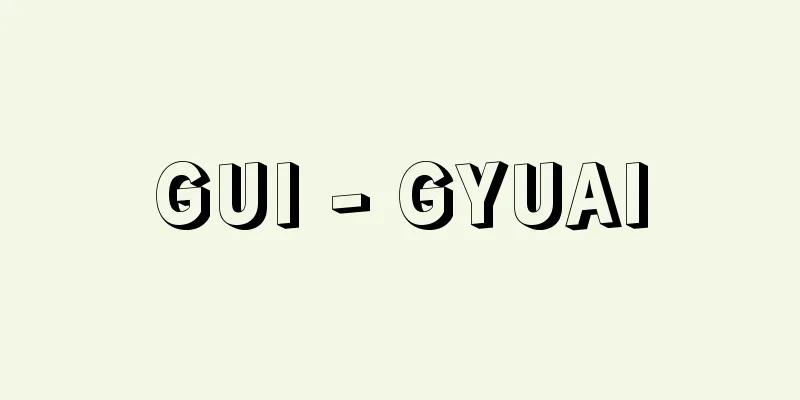Democratic Republic of the Congo (English spelling)

|
A country in the center of the African continent, straddling the equator. Until 1997, it was the Republic of Zaire. It borders the Central African Republic, South Sudan, Uganda, Rwanda, Burundi, Tanzania, Zambia, Angola, and the Republic of Congo. It has an area of 2,345,000 square kilometers and a population of 67.8 million (estimated in 2010). It is the third largest country in Africa after Sudan and Algeria. Most of the country is in the Congo River (Zaire River) basin, and only 40 kilometers of the mouth of the Congo River face the Atlantic Ocean. The capital is Kinshasa. Formerly Belgian Congo, it gained independence as the Republic of the Congo in 1960. After the Congo turmoil that followed its independence, the country's name was changed to the Democratic Republic of the Congo in 1964, then to the Republic of Zaire in 1971, and again to the Democratic Republic of the Congo in 1997. Although blessed with natural resources and great potential, the economy has long been sluggish due to war and political turmoil. In 2006, the first democratic presidential election since independence was held, and political stability is gradually returning. Attention is focused on whether the country will be able to achieve full-scale economic growth following the presidential election held in 2011. [Ken Akasaka and Masato Sawada] NatureAlmost the entire country is included in the Congo River basin, which is centered on the Congo Basin. The Congo River is the second longest river in Africa after the Nile, with a total length of 4,370 km, and a drainage area of 3.69 million square kilometers, making it the second largest in the world after the Amazon River. It originates in Zambia, changes its name to the Luapula River, the Lubua River, and the Lualaba River, and becomes the main Congo River at the Wagenia Falls near Kisangani. It then merges with the Ubangi River and the Kasai River, and flows through Lake Malebo to Kinshasa. Further downstream, it enters the Inga Gorge and becomes a rapid, flowing through Lake Matadi and into the Atlantic Ocean. The Congo Basin was a large lake basin (a concave bottom of a lake) until the Quaternary Holocene (Alluvial Epoch). Its lowest point is 300 meters above sea level, and gradually rises toward the periphery. The eastern part of the basin is the mountain range on the western edge of the Great Rift Valley, and the southern part of the basin is an old tuff plateau with an altitude of over 1000 meters. Along the Great Rift Valley, there are a series of lakes, including Lake Albert, Lake Edward, Lake Kivu, and Lake Tanganyika, from the north. In addition, the Rwenzori Mountains (5110 meters) and the Virunga volcanoes, including Mount Karisimbi (4507 meters) and Mount Nyiragongo (3470 meters), form a plateau landscape. The Congo Basin is covered with tropical rainforests, and has a typical tropical rainforest climate with high temperatures and humidity. The capital Kinshasa receives 1,400 mm of rainfall annually, and an average annual temperature of 25.3°C. The surrounding areas of the basin transition to a savanna climate with a clear distinction between the dry and rainy seasons. In Lubumbashi, the capital of Katanga Province, the monthly average temperature drops to 16.1°C in July during the dry season, and the annual rainfall is 1,229 mm, with an average annual temperature of 20.6°C, showing a mild climate. The tropical forests, which are rich in tree species, are particularly rich in monkeys, with chimpanzees in the lowlands and mountain gorillas living on Mount Kahuzi in the east. The okapi is a rare animal that only lives in the northeastern part of the Congo Basin. The Okapi Wildlife Sanctuary was registered as a World Heritage Site (World Natural Heritage) in 1996. In addition, four national parks are registered as World Heritage Sites, bringing the total number of World Heritage Sites in the Congo to five; however, all of them are on the List of World Heritage Sites in Danger due to the effects of deforestation, poaching, civil war, and other factors. [Ken Akasaka and Masato Sawada] GeographyAdministratively, the country is divided into 11 provinces, including the city of Kinshasa. The most populous provinces are Kinshasa, Oriental Province, Katanga Province, and Equateur Province. The population density of the entire country is sparse, at 29 people per square kilometer, but the population density of Kinshasa is about 1,000 people, and the population density of the Lower Congo Province and the Eastern and Western Kasai Provinces is around 50 people, showing a denser population distribution than the average. The capital, Kinshasa, faces the capital of the Republic of Congo, Brazzaville, across the Congo River. It was once called Leopoldville, but changed its name in 1966. British explorer Stanley built a base for colonial construction, and the government office was located there during the Belgian colonial period. It expanded rapidly from the 1950s, and the population is estimated to have reached 4.885 million in 1999 and about 8.4 million in 2009. Modern buildings line the city's main street, "June 30th (Independence Day) Boulevard." Meanwhile, outside the old town, districts formed by the newly influx of people spread out. Kinshasa is the center of domestic transportation, and is connected by rail to Matadi, near the mouth of the Congo River. River transportation is available to Kisangani, midstream of the Congo River. It is also a major international and domestic air route hub, with scheduled flights connecting it with domestic airports such as Kananga, Lubumbashi and Mbuji Mayi, and international airports such as Lagos, Nairobi, Johannesburg, Paris and Brussels. The second largest city is Lubumbashi, the capital of Katanga Province, with a population of about 1.5 million. Katanga Province produces copper and cobalt, which support the economy of the Democratic Republic of the Congo. In addition to Lubumbashi, mining towns such as Likasi and Kolwezi have developed. Copper was once exported via the Benguela Railway, which passes through Angola, but after its closure in 1975 due to the Angolan Civil War, it is now transported by rail or river to Matadi, or via Zimbabwe to South Africa. Diamonds are produced in the Kasai River basin. Coffee, tea and other plantations are well developed in the eastern provinces of North and South Kivu, taking advantage of the highland climate. [Ken Akasaka and Masato Sawada] historyThis region of Central Africa first appeared in world history in the 15th century, when the European Age of Discovery began. In 1482, Portuguese navigator Diogo Cao reached the mouth of the Congo River, asked the locals what the river's name was, and recorded it as Nzere. At that time, the Kingdom of Kongo had been established in this region, and ruled a wide area from present-day Angola to Gabon. The King of Kongo (who called himself Mani Kongo) established friendly relations with Portugal, and King Afonso I converted to Christianity. However, relations with Portugal deteriorated when the slave trade began. In addition, conflicts between the various kingdoms under the control of the Kingdom of Kongo intensified, and as a result, the kingdom's power declined, and the country entered an era of colonial expansion by European countries without the birth of a unified political force. In the 19th century, European exploration of the interior of Africa progressed. France and Belgium were enthusiastic about the Congo River basin, and the French explorer de Brazza explored the northern bank of the Congo River. From 1874 to 1877, Stanley crossed the African continent and determined the course of the Congo River. From 1878, Belgian King Leopold II sent Stanley to conclude treaties with African chiefs, and based on these treaties, justified the colonization of the Congo at the Berlin Conference of 1884-1885. The Congo Free State (Independent State of the Congo) established at this time was essentially Leopold II's private territory, and its purpose was to plunder resources such as rubber and ivory. This tyranny drew international criticism, and in 1908 the Belgian Congo was established under direct control of the Belgian government. Belgium's colonial rule also focused on resource development, and was uninterested in the self-governance and education of the residents. Inspired by nationalist movements in various parts of Africa, a full-scale independence movement began in the middle of the 20th century. In 1950, J. Kasavubu united the Congolese people to form the Abako Party (ABAKO, Alliance des Bakongo, Congolese National Alliance), and in 1958, P. Lumumba formed the Mouvement National Congolais (MNC, Mouvement National Congolais). Decolonization of the Congo progressed more rapidly than the Belgian government had expected, and the outbreak of unrest in the capital Leopoldville in January 1959 led to the decision to grant independence on June 30, 1960. With independence, the Republic of the Congo was established, and Lumumba, leader of the MNC, which won the largest party in the election in May of the same year, was elected prime minister, and Kasavubu became the first president. [Ken Akasaka and Masato Sawada] PoliticsImmediately after independence, political turmoil arose, including a rebellion by Congolese soldiers and a conflict between the president and the prime minister over how to deal with it. In July 1960, M. Tshombe, the prime minister of Katanga, declared the province's independence, which marked the full-scale start of the Congolese unrest. Belgium sent troops to protect Katanga's mineral resource interests, and Prime Minister Lumumba requested the prompt intervention of UN forces to prevent Katanga's independence, but the discussion of this issue in the Security Council was full of twists and turns, and the intervention he had hoped for was not carried out. Lumumba therefore sought assistance from the Soviet Union, but this action during the Cold War stirred up hostility towards Lumumba from the United States and Belgium. In September of the same year, President Kasavubu dismissed Prime Minister Lumumba, but Lumumba in turn announced his own dismissal. Taking advantage of this confusion, military commander Colonel J. Mobutu intervened politically, and Lumumba was arrested, detained, and sent to Katanga Province, where he was shot by the Katangese army on January 17, 1961. It is said that Tshombe and several Belgians were present at the shooting scene. A. Gizenga, the successor to Lumumba, launched an anti-government movement based in Stanleyville (now Kisangani). Thus, various political forces came to dominate the country. After the withdrawal of the Belgian army and the introduction of the Foreign Legion, the S. Adula government was formed in August 1961, bringing together a wide range of political forces. In December 1962, the UN forces launched an attack on Katanga, defeating Tshombe's army, and the Katangese secession issue was resolved in January 1963. However, after the complete withdrawal of the UN forces, domestic unrest spread, and the rebel army of P. Murele, a follower of the Lumumba faction, based itself in Stanleyville and declared the establishment of the People's Republic of the Congo in July 1964. When the Adula regime collapsed, President Kasavubu appointed Tshombe as prime minister in July 1964, and the Democratic Republic of the Congo was born in August of the same year (the country's name was changed from the Republic of the Congo). In November of the same year, Stanleyville was taken control with military aid from the United States and military intervention from Belgium, and the second unrest ended in March 1965. After that, the conflict between Kasavubu and Tshombe intensified, and in November 1965, the army commander-in-chief, Lieutenant General Mobutu, staged a coup d'état, took power, and became president. After taking office, Mobutu declared a five-year state of emergency and purged his political opponents, or politicians and military personnel who looked likely to become political opponents, strengthening his dictatorial character. In 1966, he renamed the capital Kinshasa, and then changed the names of cities, places, and people from foreign languages to local languages. In 1971, he renamed the country, rivers, and currency Zaire (the country's name is now the Republic of Zaire). After winning the presidential election in November 1970, he further consolidated his dictatorial regime as a one-party state of the Revolutionary People's Movement (MPR, Mouvement Populaire de la Révolution). In November 1973, he announced the Zaireization Plan, which included the nationalization of the Belgian-funded mining company MIBA, and transferred management of foreign-owned companies, plantations, shops, etc. to Zaireans. Although it was a policy aimed at economic independence, many of the companies and shops that were confiscated were eventually distributed to Mobutu and his political elite. Because they were inexperienced in management and business, the operations of these companies and shops quickly came to a standstill, and Zaire's economy suffered a serious blow. Under these circumstances, the anti-Mobutu Congolese National Liberation Front used Angola as a base to invade Shaba Province (now Katanga Province) in March 1977 and May 1978. In particular, during the 1978 invasion, they briefly occupied the mining town of Kolwezi, but the Zairean army offered little resistance. In the end, they received reinforcements from Morocco, France, and Belgium, which enabled them to repel the invading armed forces. Since the 1973 Zaireization policy, the country's economy had been impoverished and its national power had been in a long-term decline, partly due to the slump in the international price of copper, the country's main export. Throughout the 1980s, the country was unable to develop infrastructure such as roads, which led to a gradual decline in economic activity and the worsening inflation caused by the fall in the value of the currency. Although it was clear that the cause of the economic downturn was the corrupt Mobutu regime, Western countries, led by the United States, supported Zaire, focusing on its strategic importance during the Cold War. However, Zaire's importance declined with the end of the Cold War. The wave of democratization in Eastern Europe was also spreading to Africa. In response to this situation, the United States demanded democratization of politics in Zaire. Under pressure from the international community, Mobutu declared a transition to a multi-party system in April 1990, and in April 1992, a National Conference was established to discuss the problems facing Zaire and the transition to democratic politics. However, political turmoil continued and the movement towards democratization began to stagnate. The genocide in neighboring Rwanda from April to July 1994 and the subsequent influx of Rwandan refugees into eastern Zaire presented an opportunity for President Mobutu, who was in a politically difficult situation, to regain power. The international community also needed to maintain good relations with the Mobutu regime in order to provide humanitarian aid to the refugees. However, from 1994 to 1996, the former Rwandan government forces and their militias repeatedly launched cross-border attacks on Rwanda, which was governed by the new government, from the Rwandan refugee camps in the east. The Rwandan government at the time demanded that the Mobutu regime "stop the attacks from the refugee camps," but this had little effect. In August 1996, President Mobutu was suddenly taken to Switzerland, hospitalized, and underwent cancer surgery. As if taking advantage of Mobutu's health concerns, the Alliance of Democratic Forces for the Liberation of Congo-Zaire (AFDL, Alliance des Forces Démocratiques pour la Libération du Congo), a group of Tutsi Banyamulenge people who had settled in Zaire, began fighting the Zairean army and the former Rwandan government forces in September and October 1996, with the support of the Rwandan and Ugandan armies. As a result, about 500,000 refugees, mostly Hutu, returned to Rwanda from Rwandan refugee camps. The AFDL, calling for the overthrow of Mobutu's regime, advanced on the capital Kinshasa, defeating government forces in various places and entering Kinshasa on May 17, 1997. Mobutu fled the country the day before, ending his 32-year dictatorship. On September 7 of the same year, Mobutu died in exile in Morocco. Laurent Kabila, chairman of the AFDL, changed the name of the Republic of Zaire to the Democratic Republic of the Congo and declared himself Head of State (President). He also suspended the Constitution and formed a transitional government. The Cabinet was composed mainly of AFDL members, with only a few ministers selected from the opposition parties during the Mobutu era. Tshisekedi, a central figure in the anti-Mobutu movement, and his party were excluded from the Cabinet. In March 1998, he announced a new draft Constitution that abolished the position of Prime Minister and established a bicameral parliament. Laurent Kabila received support from Rwanda and Uganda in seizing power, and the Rwandan army was actually in command of the fighting. After the war, his commander became the chief of staff of the Democratic Republic of Congo's army, so Kabila was seen as a Rwandan puppet and was unpopular with the people. After that, Kabila himself began to distance himself from Rwanda and Uganda, and relations with the two countries deteriorated. In August 1998, the Banyamulenge soldiers of the government army rose up in revolts in Bukavu, Goma, Kisangani, and other places, and at almost the same time, the Rwandan and Ugandan armies also invaded the Democratic Republic of Congo, starting a civil war. This civil war became an international conflict, with Zimbabwe, Namibia, and Angola supporting Kabila and Uganda and Rwanda supporting the rebels. The number of countries involved and the vastness of the fighting area were unprecedented on the African continent, and it was sometimes called the "First African War." Immediately after the conflict began, peace talks were held many times with the mediation of Zambia and South Africa, but no effective agreement was reached. In January 2001, Kabila was killed, and his son, Joseph Kabila (1971- ), became president. Unlike his father, Joseph Kabila was proactive in peace talks, and reached a peace agreement with Rwanda in July 2002 and with Uganda in September of the same year. In December of the same year, a peace agreement was signed in Pretoria, South Africa, between the government and rebel forces, including the establishment of a transitional government. Under the transitional constitution enacted the following year, presidential and parliamentary elections were held in 2006, and Joseph Kabila was elected president. In order to suppress the rebellion in eastern Congo, he established friendly relations with Rwanda, which had been an enemy, and conducted joint operations, and also promoted improved relations with Uganda. Joseph Kabila was re-elected in November 2011 (for the third time), but many have pointed out that the election results were falsified, and many opposition figures do not recognize the president's legitimacy. Attention is focused on whether democracy will take root and peace will continue. According to the Constitution enacted in December 2005, the Democratic Republic of the Congo is a republic with a democratic system that allows multiple political parties. The President is the head of state and has the power to appoint and dismiss the Prime Minister. The President is directly elected for a five-year term and can be re-elected only once (up to two terms). The parliament is bicameral, consisting of a 500-member National Assembly and a 108-member Senate. The former is directly elected in each electoral district, and the latter by the provincial assemblies. Both have a five-year term and can be re-elected. Although the country touts the separation of powers, doubts remain as to whether the independence of the judiciary is actually guaranteed. There are also some items stipulated in the constitution that have yet to be realized. For example, the administrative divisions are to be made up of a capital and 25 provinces, but reorganization from the previous capital and 10 provinces has yet to be implemented. If the discrepancy between the constitution and reality continues for a long time, the principle of the rule of law may be jeopardized. For the Democratic Republic of the Congo, the establishment of the rule of law, along with the establishment of democracy, is an important issue. [Masato Sawada] Economy and IndustryDuring the Congo Free State period (1885-1908), the main export products were rubber and ivory. Later, it became the Belgian Congo, and large-scale mining development began in the 1920s. Copper and other minerals were extracted in southern Katanga, tin in northern Katanga and Maniema, diamonds in Kasai, and gold in Eastern and southern Kivu, all of which continue to be mined to this day. After World War II, the economy of the Belgian Congo developed smoothly, mainly through the export of underground resources, but capital flight began in the late 1950s just before independence, and a slowdown became evident. Economic activity further stagnated due to the unrest that began immediately after independence. After Mobutu's coup in 1965, production of major minerals such as copper, zinc, tin, and cobalt increased through the early 1970s, and the economy continued to grow. However, after the Zaireization policy of 1973, the economy rapidly deteriorated. The inflation rate, which was in the single digits from 1971 to 1973, reached about 30% in 1974, about 60% from 1975 to 1977, and about 80% in 1978. The real wage index also rapidly deteriorated, falling to about 70 in 1975, about 55 in 1976, and about 38 in 1977, with 1970 as the base of 100. Even in the 1980s, the pace of recovery was slow, and GDP increased by only about 13% in the ten years from 1980 to 1990. The population growth rate during this period is estimated to be about 3.2% per year, so the population increased by about 33% in ten years. In other words, GDP per capita fell by about 15% during this period. The so-called structural adjustment policies, which were mandated by the IMF to reduce government spending in heavily indebted countries in the 1980s, are also said to have had a negative impact on the economy. In the first half of the 1990s, the economy was in a state of constant decline due to political turmoil caused by the conflict between the democratization movement and the president, and in the second half, war. Some sources point out that the inflation rate was several thousand percent per year, and in some cases even tens of thousands of percent. The fact that the inflation rate was higher than that of Angola, which was in the midst of a civil war during this period, shows that the country's economic situation was in a state of emergency. After the peace agreement was signed in 2002, there were years up until 2010 when inflation rates were relatively high at 40%, but it has generally remained at around 10% to 20%, and inflation has calmed down somewhat compared to the past. Joseph Kabila, who was elected president in 2006, set out a set of five key reform policies: rebuilding infrastructure such as roads and airports, improving access to health and education, providing housing, establishing water and electricity networks, and creating jobs. The Democratic Republic of Congo has always had huge foreign debt. Although some of the debt has been written off several times, the debt has repeatedly increased. The debt increased again throughout the 2000s, and in 2010, the country was said to have owed about $14 billion in foreign debt. Negotiations to reduce this debt began in 2002 with the IMF, the World Bank, and other creditor countries. However, when a huge aid contract worth $9 billion was signed with a Chinese group in 2008, the IMF and the World Bank expressed their disapproval of the contract, saying that the debt had increased significantly during the debt reduction negotiations, and the negotiations were suspended. In the end, the contract with the Chinese side was reduced to $6 billion, and in July 2010, the IMF and the World Bank announced that they would reduce the Democratic Republic of Congo's foreign debt by $12.3 billion. Joseph Kabila's "Five Reforms" are heavily dependent on infrastructure development by Chinese business groups. Thanks to controlled inflation and investment from China, GDP has been stable since the peace agreement in 2002. Until 2008, the growth rate was maintained at 5-7%, but in 2009, it fell to 2.8% due to the impact of the global recession. GDP per capita in 2009 was about $160, estimated to be the lowest in the world. The currency is the Congolese franc (FC). [Masato Sawada] Society and CultureThere are four national languages: Lingala, which is mainly spoken in Equateur Province; Luba, which is mainly spoken in Kasai East and West; Kongo, which is mainly spoken in Lower Congo Province; and Swahili, which is mainly spoken in North, South Kivu, Maniema, and Oriental Provinces in the east. These languages are used in radio and television broadcasts, as well as in local education and economic activities. French is also designated as the official language and is used in education from the middle grades of elementary school onwards, official documents, and business. Lingala is used in the military and is spoken nationwide. There are more than 200 ethnic groups living in the country, each with their own language. Most of them belong to the Niger-Congo language family (including Bantu languages), but in the north there are also languages belonging to the Nilo-Saharan language family (including Sudanese languages). The most populous ethnic groups are the Kongo, Chokwe, Luba, Mongo, Nande, Songye, Tetera, Lendu, and Azande. Between the 15th and 18th centuries, several kingdoms were formed in this region, including the Kingdom of Kongo (around present-day Lower Kongo Province), the Kingdom of Luba (around present-day Katanga Province), and the Kingdom of Kuba (around present-day East and West Kasai Provinces), and they developed magnificent material cultures. Of course, outside the territories of these kingdoms, there are many examples of highly technical perfection, including colorful sculptures, masks, stools, ceremonial axes, pottery, basketry, and weaving. In addition to material culture, spiritual cultures such as oral traditions and myths also developed in each region, and if they were collected and organized in an organized manner, they would become a common heritage for all of humanity. Music and dance are also traditionally popular. The Mbuti (sometimes called "pygmies") who live in the Ituri region of the Eastern Province are particularly known for their densely layered polyphonic singing, which resembles intricately woven fabric. In the capital Kinshasa, a new musical genre called Lingala music was born, fusing various traditional music styles with the rumba, which was adopted from the Caribbean. Initially performed in the Lingala language, it is now composed and performed in a variety of languages other than Lingala, and is loved as popular music across a wide area of the African continent. During the colonial period, education was mainly promoted as part of Christian missionary activities, and for ordinary Congolese who could not afford it, the only way to receive a secondary or higher education was to enroll in a Christian seminary. The constitution stipulates that primary school (six years) is compulsory, and public primary schools are free. In 2008, the number of students is rapidly increasing, with approximately 10 million primary school students and approximately 3 million secondary school students enrolled. However, due to insufficient budgets, the expansion of teachers and facilities has not kept up, and parents bear a considerable financial burden. As a result, it is said that 25% of primary school-age children are not enrolled. The number of higher education institutions, such as universities and technical colleges, has been increasing rapidly in recent years. The number of students also increased sharply from a total of about 60,000 in 1999 to about 300,000 in 2008, and it is possible that in the near future a large number of intellectually productive young people will be able to expand their fields of activity. Regarding religion, Christianity has been dominant since the Belgian colonial period, with 50% of the population being Catholic, followed by Protestantism at 20%, Kimbanguist at 10%, Islam at 10%, and indigenous religions at 10%. Kimbanguist is a sect that could be considered an indigenous form of Christianity founded by Simon Kimbangu in April 1921. He was arrested in September of the same year and was imprisoned until his death in 1951. Despite this, his teachings have spread not only throughout the Democratic Republic of the Congo, but also to the neighboring Republic of the Congo and Angola. Among the mass media, newspapers and magazines are concentrated in large cities, especially the capital, and in regional cities it is rare to obtain a newspaper with the current date. Television and radio are widespread, with broadcasts available in the four national languages as well as French. In recent years, the mobile phone network has expanded at an astonishing speed, and the number of people owning a mobile phone is increasing rapidly. In 2010, there were estimated to be 42,000 landline lines, while the number of mobile phones exceeded 11 million. As of 2008, there were approximately 300,000 Internet users, and in regional cities there are stores that allow users to use their computers for email. [Masato Sawada] Relations with Japanになったんです。 English: The first thing you can do is to find the best one to do. In 2005 (Heisei 17), Joseph Kabila, the interim president at the time, came to Japan as a practical guest. With the presidential election being held in 2006, Japanese aid resumed in earnest from the following year, 2007. The results for fiscal year 2009 were approximately 11.5 billion yen in total grant aid and technical cooperation. This includes health and medical projects, such as pediatric infectious disease prevention plans, infrastructure-related projects such as repairs to roads and water purification plants, and forest conservation projects. As of October 2009, the number of Japanese residents was 46, a significantly lower than the 83 in 1990, but in recent years, people-to-people exchanges have been increasing, with academic research related to Kyoto University being resumed in the Equatorial state. Japan will likely deepen its relationship once again, as it has abundant underground resources and a large area of cultivation. [Akasaka Ken and Sawada Masato] [Reference items] | | | |Gizenga| | | | | | | | | | | | | | | [Complementary Material] |"> Democratic Republic of the Congo flag ©Shogakukan Illustration/Shogakukan Creative "> Location map of the Democratic Republic of Congo Source: Shogakukan Encyclopedia Nipponica About Encyclopedia Nipponica Information | Legend |
|
アフリカ大陸の中央部、赤道にまたがる国。1997年まではザイール共和国。中央アフリカ、南スーダン、ウガンダ、ルワンダ、ブルンジ、タンザニア、ザンビア、アンゴラ、コンゴ共和国の各国と国境を接している。面積234万5000平方キロメートル、人口6780万(2010年推計)。面積はスーダン、アルジェリアに次いでアフリカでは3番目に大きい。 国土の大半はコンゴ川(ザイール川)の流域が占め、コンゴ川河口のわずか40キロメートルだけが大西洋に面している。首都はキンシャサ。かつてのベルギー領コンゴで、1960年にコンゴ共和国として独立した。独立直後のコンゴ動乱を経て1964年に国名をコンゴ民主共和国、さらに1971年ザイール共和国、1997年にふたたびコンゴ民主共和国と改称した。天然資源に恵まれ豊かな可能性をもちながら、戦乱と政治的混乱によって長らく経済は低迷してきた。2006年に独立後初の民主的な手続きで大統領選挙が行われ、政治的安定を取り戻しつつある。2011年に行われた大統領選挙を経て、本格的な経済的成長を達成することができるか注目される。 [赤阪 賢・澤田昌人] 自然ほぼ全土がコンゴ盆地を中心とするコンゴ川の流域に含まれる。コンゴ川は全長4370キロメートル、ナイル川に次ぐアフリカ第二の長流で、流域面積は369万平方キロメートル、アマゾン川に次いで世界第2位を占める。源流はザンビアに発し、ルアプラ川、ルブア川、ルアラバ川と名称を変え、キサンガニ近くのワゲニア滝からコンゴ川の本流となる。さらにウバンギ川、カサイ川と合流し、マレボ湖を経てキンシャサに至る。さらに下流はインガ峡谷に入り急流となり、マタディ湖を経て大西洋に注ぐ。コンゴ盆地は第四紀完新世(沖積世)まで大きな湖盆(湖のへこんだ水底)をなしていた。もっとも低い部分で300メートルの標高があり、周辺に向かってしだいに高くなる。盆地の東はアフリカ大地溝帯西縁の山地をなし、盆地の南は高度1000メートルを超える古い凝灰岩の高原をなしている。大地溝帯に沿って、北からアルバート湖、エドワード湖、キブ湖、タンガニーカ湖など点々と湖が連なっている。また、ルウェンゾリ山地(5110メートル)のほかカリシンビ火山(4507メートル)、ニーラゴンゴ火山(3470メートル)などのビルンガ火山群が連なって高原の景観を形成している。 コンゴ盆地は熱帯雨林に覆われ、高温多湿の典型的な熱帯雨林気候を示す。首都キンシャサの年降水量は1400ミリメートル、年平均気温は25.3℃。盆地の周辺部は乾期・雨期の区別が明らかなサバンナ気候へと移行する。カタンガ州の州都ルブンバシでは乾期の7月には月平均気温は16.1℃に下がり、年降水量も1229ミリメートル、年平均気温20.6℃で温和な気候を示す。樹種の多様な熱帯森林にはとくにサル類が豊富で、低地部にはチンパンジー、東部のカフジ山にはマウンテンゴリラが生息している。またオカピはコンゴ盆地東北部にのみ生息する珍しい動物である。オカピの野生生物保護区は1996年に世界遺産の自然遺産(世界自然遺産)に登録された。このほかに4か所の国立公園が世界自然遺産に登録されており、コンゴ国内の世界遺産の合計は5か所であるが、森林伐採、密猟、内戦などの影響により、すべてが危機遺産リスト入りしている。 [赤阪 賢・澤田昌人] 地誌行政的にはキンシャサ市を含めて11の州に分かれている。人口の多いのはキンシャサ市、東部州、カタンガ州、赤道州などである。国全体の人口密度は1平方キロメートル当り29人と希薄であるが、キンシャサ市の人口密度は約1000人で人口が集中しており、下コンゴ州、東・西カサイ州は人口密度50人前後と、平均より濃密な人口分布を示している。 首都のキンシャサは、コンゴ川を挟んでコンゴ共和国の首都ブラザビルと向かい合っている。かつてレオポルドビルとよばれたが、1966年に名称を改めた。イギリスの探検家スタンリーが植民地建設の基地を築き、ベルギー領時代には総督府が置かれた。1950年代から急速に拡大し、1999年には人口は488.5万人に、2009年には約840万人に達したと推定されている。市内のメーンストリートの「6月30日(独立記念日)大通り」に沿って近代的なビルが建ち並ぶ。一方旧市街の外には、新しく流入した人口で形成された地区が広がっている。キンシャサは国内の交通の中心であり、コンゴ川河口近くのマタディとは鉄道で結ばれている。コンゴ川中流のキサンガニへは河上交通が利用できる。国外・国内の航空路の中心でもあり、カナンガ、ルブンバシ、ムブジ・マイなど国内の空港およびラゴス、ナイロビ、ヨハネスブルグ、パリ、ブリュッセルなどの国外の空港と定期便で結ばれている。 第二の都市はカタンガ州の州都ルブンバシで人口約150万人である。カタンガ州はコンゴ民主共和国経済を支える銅、コバルトを産出する。ルブンバシのほかリカシ、コルウェジなどの鉱山都市が発展している。銅の輸出は、かつてはアンゴラを通過するベンゲラ鉄道によっていたが、アンゴラ内戦による閉鎖(1975)後は鉄道や河上交通でマタディに、あるいはジンバブエを経由して南アフリカに運んでいる。ダイヤモンドはカサイ川流域で産出する。東部の北・南キブ州は、高原の気候を利用したコーヒー、紅茶などのプランテーションが発達している。 [赤阪 賢・澤田昌人] 歴史中部アフリカのこの地域が世界史に登場するのは、ヨーロッパの大航海時代が始まる15世紀のことである。ポルトガルの航海者ディオゴ・カンは、1482年コンゴ川の河口に達し、川の名を住民にたずね、ンゼレと記録した。当時、この地域にはコンゴ王国が成立していて、現在のアンゴラからガボンにかけての広い領域を支配していた。コンゴ王(マニ・コンゴと称していた)はポルトガルと友好関係を結び、国王アフォンソ1世はキリスト教に改宗した。しかし、ポルトガルとの関係は、奴隷貿易が開始されたため悪化した。また、コンゴ王国の支配下にあった諸王国の抗争が激化し、その影響で王国の勢力は衰退し、統一した政治勢力はその後生まれないままヨーロッパ諸国の植民地的進出の時代を迎えた。 19世紀に入りヨーロッパ人のアフリカ内陸部の探検が進んだ。コンゴ川流域についてはフランスとベルギーが熱心で、フランスのド・ブラザはコンゴ川の北岸地帯を探検した。1874年から1877年にスタンリーは、アフリカ大陸を横断しコンゴ川の流路を見極めた。ベルギー国王レオポルド2世は1878年以降スタンリーを派遣し、アフリカ人の首長と条約を結び、それに基づき1884~1885年のベルリン会議においてコンゴの植民地化を正当化した。この時点で成立したコンゴ自由国(コンゴ独立国)は実質的にレオポルド2世の私的領地であり、その目的はゴムと象牙(ぞうげ)などの資源の収奪にあった。この暴政は国際的な世論の非難を浴び、1908年にベルギー政府が直接支配するベルギー領コンゴが成立した。ベルギーの植民地統治も資源開発に重点を置き、住民の自治や教育などについては無関心であった。 アフリカ各地の民族主義運動に刺激を受け、20世紀なかばから本格的な独立運動が展開した。1950年にJ・カサブブはコンゴ民族を糾合してアバコ党(ABAKO=Alliance des Bakongo、コンゴ民族同盟)を結成、1958年にはP・ルムンバがコンゴ国民運動(MNC=Mouvement National Congolais)を結成した。コンゴの脱植民地化はベルギー政府の予想以上に急展開し、1959年1月首都レオポルドビルで勃発(ぼっぱつ)した騒乱をきっかけに、1960年6月30日の独立が決定された。独立によりコンゴ共和国が成立、同年5月の選挙で第一党を占めたMNC党首のルムンバが首相に選ばれ、カサブブが初代大統領に就任した。 [赤阪 賢・澤田昌人] 政治独立直後にコンゴ人兵士の反乱、その収拾をめぐる大統領と首相の対立など政治的混乱が生じた。1960年7月にはカタンガ州の首相M・チョンベが州の分離独立を宣言し、これをきっかけにコンゴ動乱が本格的に始まった。カタンガ州の鉱物資源の利権を守るためベルギーは軍隊を派遣、首相ルムンバはカタンガ州の独立を阻止するため国連軍の迅速な介入を要請したが、安全保障理事会におけるこの問題の議論は紆余曲折(うよきょくせつ)を極め、ルムンバが期待するような介入は行われなかった。そのためルムンバはソ連の援助を求めることになったが、冷戦下におけるこの行動はルムンバへのアメリカ、ベルギーの敵意をかき立てることになった。同年9月に大統領カサブブは首相であったルムンバを解任したが、逆にルムンバはカサブブの解任を発表した。 この混乱に乗じ軍司令官で大佐のJ・モブツが政治的介入を行い、ルムンバは逮捕されて拘禁されたのちカタンガ州に送られ、1961年1月17日カタンガ軍により銃殺された。銃殺の現場にはチョンベのほか複数のベルギー人も立ち会ったといわれている。ルムンバ派の後継者A・ギゼンガはスタンリービル(現、キサンガニ)を本拠地として反政府運動を起こした。こうして国内は各政治勢力が割拠するに至った。その後、ベルギー軍の撤退、外人部隊の導入などの経過を経て、1961年8月に幅広い政治勢力を結集してS・アドゥラ政府が誕生した。1962年12月、国連軍はカタンガへの攻撃を開始、チョンベ軍は敗退し、1963年1月にカタンガの分離問題は終結した。しかし国連軍の完全撤退後、国内の混乱は広がり、ルムンバ派の流れをくむP・ムレレの反政府軍はスタンリービルを根拠に1964年7月コンゴ人民共和国の設立を宣言した。アドゥラ政権が崩壊すると、1964年7月大統領カサブブはチョンベを首相に任命し、同年8月コンゴ民主共和国が誕生した(コンゴ共和国から国名を改称)。同年11月アメリカの軍事援助やベルギーの軍事介入などで、スタンリービルは制圧され、この第二次動乱は1965年3月に終息した。その後カサブブとチョンベの対立が激化すると、1965年11月に軍最高司令官で中将のモブツがクーデターを起こして政権を握り大統領に就任した。 モブツは大統領就任後、5年間の非常事態宣言を出し政敵、もしくは政敵になりそうな政治家、軍人を次々に粛清し独裁色を強めた。1966年には首都の名称をキンシャサとし、ついで都市名、地名、人名などを外国語名から現地語に改め、1971年には国名、川名、通貨名をすべてザイールと改称した(国名はザイール共和国)。彼は1970年11月の大統領選挙で勝利を収めると、革命人民運動(MPR=Mouvement Populaire de la Révolution)の一党制国家としての独裁体制をさらに強固なものにした。1973年11月にはザイール化計画を発表し、ベルギー資本の鉱業会社MIBAの国有化をはじめとして、外国人所有の企業、プランテーション、商店などの経営をザイール人の手に移した。経済的独立を目ざした政策であったが、接収した企業、商店などの多くは、結局モブツおよびその周辺の政治エリートたちに分配された。彼らは経営、商売に不慣れなため、これらの企業、商店などの経営はたちまち行き詰まり、ザイール経済は深刻な打撃を被った。 このような状況のもと、1977年3月および1978年5月に、反モブツ派のコンゴ民族解放戦線がアンゴラを基地にしてシャバ州(現、カタンガ州)に侵入した。とくに1978年の侵攻では一時鉱山都市コルウェジを占領したが、ザイール軍はほとんど抵抗できなかった。結局、モロッコやフランス、ベルギーから援軍を受け入れ、そのおかげで侵入した武装勢力を撃退することができた。 1973年のザイール化政策以降、主力輸出品である銅の国際価格低迷もあって、経済が疲弊し長期的な国力低下をきたしていた。1980年代を通じて、道路などインフラを整備することもできず、そのため経済活動は徐々に低下していき、貨幣価値の低下に伴うインフレが進行していった。 経済低迷の原因が腐敗したモブツ政権にあることは明らかであったが、アメリカを中心とする西側諸国は冷戦時代におけるザイールの戦略的重要性に着目し、支持してきた。しかし、冷戦が終わるとともにザイールの重要性は低下した。また東欧での民主化のうねりもアフリカに及びつつあった。その状況を受けて、アメリカはザイールにおける政治の民主化を要求した。国際社会による圧力を受けてモブツは1990年4月、複数政党制への移行を宣言し、1992年4月にはザイールが直面する諸問題と民主政治への移行を議論するため、国民会議が始まった。しかし政治混乱が続き民主化の動きは停滞するようになった。 1994年4~7月に起きた東隣のルワンダでの大虐殺と、その後ザイール東部に流入した大量のルワンダ難民は、政治的苦境にあったモブツ大統領にとって復権を図るチャンスであった。国際社会も難民への人道援助のために、モブツ政権と良好な関係を保つ必要があったからである。 しかし1994年から1996年にかけて、東部のルワンダ難民のキャンプから、旧ルワンダ政府軍やその民兵が、新政府の治めるルワンダへの越境攻撃を繰り返していた。当時のルワンダ政府は、モブツ政権に対して「難民キャンプからの攻撃をやめさせるよう」要求していたが、効果はほとんどなかった。1996年8月にモブツ大統領は突然スイスに運ばれ入院し、ガンの手術を受けた。 モブツの健康不安に便乗するかのように、1996年9~10月ザイールに定住していたツチ系のバニャムレンゲ人主体のコンゴ・ザイール解放民主勢力連合(AFDL=Alliance des Forces Démocratiques pour la Libération du Congo)が、ルワンダ軍、そしてウガンダ軍の支援を受け、ザイール軍および旧ルワンダ政府軍との戦闘を開始した。この結果、ルワンダ難民キャンプからフツ人を中心とする難民約50万人のルワンダ帰国が実現した。AFDLはモブツ政権の打倒を唱えて首都キンシャサに進撃し、各地で政府軍を撃破し、1997年5月17日にキンシャサに入った。モブツはその前日国外に逃亡し、32年間に及ぶ独裁政治が終了した。同年9月7日、モブツは亡命先のモロッコで死亡した。 AFDL議長のローラン・カビラはザイール共和国の名称をコンゴ民主共和国に変更し、元首(大統領)就任を宣言した。さらに憲法の効力を停止し、暫定政権の内閣を組織した。内閣はAFDLのメンバーを中心に構成され、それ以外にはモブツ時代の野党から少数の閣僚が選ばれただけで、反モブツ勢力の中心人物であったチセケディと彼の党は内閣から排除された。1998年3月、首相廃止や二院制議会の設置などを規定した新しい憲法案を発表した。 ローラン・カビラは政権奪取にあたりルワンダ、ウガンダの支援を受け、実際はルワンダ軍が戦闘の指揮をとった。戦後その司令官はコンゴ民主共和国軍の参謀長になっていたことからカビラはルワンダの傀儡(かいらい)と目され、国民に人気がなかった。その後、カビラ自身もルワンダ、ウガンダと距離をとり始め、両国との関係は悪化した。1998年8月ブカブ、ゴマ、キサンガニなどで政府軍のバニャムレンゲ兵が一斉に蜂起、ほぼ同時にルワンダ軍、ウガンダ軍もコンゴ民主共和国領内に侵攻し内戦が始まった。 この内戦には、カビラ支持のジンバブエ、ナミビア、アンゴラなどと、反政府軍支持のウガンダ、ルワンダなどが参戦、国際紛争化した。参戦国の多さ、戦闘地域の広大さはアフリカ大陸で前例をみないものであり、当時「第一次アフリカ大戦」とよばれたこともある。 紛争開始直後から、ザンビアや南アフリカの仲介で何度も和平交渉が行われたが、実効性のある合意には至らなかった。こうしたなか、2001年1月カビラが殺害され、息子のジョゼフ・カビラJoseph Kabila(1971― )が大統領に就任した。ジョゼフ・カビラは、父親と異なり和平交渉に積極的で、2002年7月ルワンダと、同年9月にはウガンダと和平合意。同年12月、政府、反政府勢力らの間で、暫定政府樹立を含めた和平協定が南アフリカのプレトリアで調印された。翌年制定された暫定憲法の下、2006年には大統領選挙、議会選挙が行われ、ジョゼフ・カビラが大統領に選出された。彼は、コンゴ東部における反乱を制圧するために、敵対していたルワンダと友好関係を結んで共同作戦を行ったほか、ウガンダとの関係改善も進めた。ジョゼフ・カビラは2011年11月に再選(三度目の就任)されたが、選挙結果がねつ造されたとの指摘も多く、大統領の正統性を認めない野党関係者も少なくない。民主主義が定着して平和が続くのか注目されている。 2005年12月に制定された憲法によれば、コンゴ民主共和国は共和制で複数政党を認める民主主義体制である。大統領は国家元首であり、首相を任免できる権限をもっている。大統領は直接選挙で選ばれ、任期は5年、再選は1回のみ(2選まで)と定められている。議会は、議員数500名の国民議会と、108名の上院からなる二院制である。前者は各選挙区での直接選挙、後者は各州議会で選出される。両者とも任期は5年で再選は妨げられない。 三権分立もうたわれているが、現実に司法権の独立が保障されているか疑問をもたれている。また憲法で定められているが、いまだ実現していない項目もある。たとえば行政区分は首都と25の州から構成されることになっているが、従来の首都と10州からの再編はいまだに実施されていない。憲法と現実の乖離(かいり)が長く続けば、法による支配の原則が危うくなりかねない。コンゴ民主共和国にとっては、民主主義の確立と並んで法の支配の確立が重要な課題といえよう。 [澤田昌人] 経済・産業コンゴ自由国時代(1885~1908)の間、輸出産品のほとんどはゴムと象牙(ぞうげ)であった。その後ベルギー領コンゴとなり、1920年代には大規模な鉱山開発が始まるようになった。銅その他はカタンガ州南部、錫(すず)はカタンガ州北部とマニエマ州、ダイヤモンドはカサイ州、金は東部州およびキブ州南部で鉱山開発が行われ、いずれも現在に至るまで採掘が続いている。 第二次世界大戦後、ベルギー領コンゴの経済は地下資源の輸出を中心に順調に発展してきたが、独立直前の1950年代後半には資本の逃避も始まり、減速が明らかとなってきた。さらに独立直後から始まった動乱のため、経済活動は停滞した。1965年のモブツによるクーデター以降は、1970年代初めにかけて銅、亜鉛、錫、コバルトなど主要鉱産物の産出は増加し、経済成長が続いた。 しかし、1973年のザイール化政策以降、経済は急激に悪化した。1971~1973年まで1桁(けた)台であったインフレ率は、1974年に約30%、1975~1977年は約60%、1978年には約80%に達した。それに伴って実質賃金の指数も1970年を100として、1975年には約70、1976年には約55、1977年には約38と急速に悪化した。1980年代になっても回復の歩みは遅々としたものであり、1980年から1990年までの10年間でGDPは約13%しか増加していない。この間の人口増加率は年約3.2%と推定されているので、10年間で約33%の人口増加である。つまり1人当りのGDPはこの間15%ほど低下しているのである。1980年代に重債務国に対してIMFが義務づけた政府支出の削減政策、いわゆる構造調整政策も、経済に悪影響を及ぼしたとされている。 1990年代前半は、民主化運動と大統領の対立による政治的混乱、後半は戦乱によって経済は疲弊の一途をたどった。インフレ率が年間数千%、一説には数万%に及んだとの指摘もある。この時期、内戦のさなかであったアンゴラよりもインフレ率が高かったという事実は、この国の経済状況が非常事態であったことを物語っている。 2002年の和平協定成立後、2010年までは40%という比較的高いインフレ率の年もあったが、おおむね10数%から20%前後で推移しており、過去と比較してインフレはやや収まってきている。 2006年の大統領選挙で当選したジョゼフ・カビラは、「5つの改革」として重点的な政策を掲げた。すなわち「道路、空港などインフラの再建」「保健、教育へのアクセスの改善」「住宅の供給」「水道と電気のネットワークを確立すること」「雇用を創出すること」の5つである。 コンゴ民主共和国は莫大(ばくだい)な対外債務をつねに抱えてきた。これまで何度か債務の一部を帳消しにされながらもふたたび債務を増加させることを繰り返してきた。2000年代を通じてふたたび債務は増加し、2010年には約140億ドルの対外債務を負っていたとされている。この債務を削減する交渉はIMFや世界銀行、そのほかの債権国との間で2002年から始まっていたが、2008年に中国企業グループとの間で結ばれた90億ドルにのぼる巨大な援助契約に対してIMFや世界銀行は、債務削減交渉のさなかに債務を大幅に増加させると、この契約に難色を示し、交渉は中断した。結局中国側との契約は60億ドルに減額され、2010年7月になってIMFと世界銀行はコンゴ民主共和国の対外債務を123億ドル削減すると発表した。 ジョゼフ・カビラの「五つの改革」は、中国企業グループによるインフラ整備に頼るところが大きい。インフレの抑制と中国側の投資もあって、2002年の和平合意以降GDPは堅調に推移している。2008年まで5~7%台前半の成長率を維持していたが、2009年には世界的な不況のあおりを受け2.8%に低下した。2009年の1人当りGDPは約160ドルであり、世界の国で最下位と推定されている。通貨はコンゴ・フラン(FC)。 [澤田昌人] 社会・文化言語は、赤道州を中心に普及しているリンガラ語、東・西カサイ州を中心のルバ語、下コンゴ州中心のコンゴ語、そして東部の北・南キブ州・マニエマ州・東部州中心のスワヒリ語の4種の言語が国語として採用されており、ラジオやテレビの放送で用いられたり、地域の教育や経済活動で使用されたりしている。さらにフランス語が公用語に指定されており、小学校中学年以降の教育、公的な書類、ビジネスに用いられている。リンガラ語は軍隊で用いられており全国的に普及している。さらに、国内には細かく数え上げると200以上もの民族が居住しており、それぞれの言語をもっている。その大部分はニジェール・コンゴ語族(バントゥー諸語を含む)に属するが、北部にはナイル・サハラ語族(スーダン諸語を含む)に属する言語も存在する。人口の多い民族としては、コンゴ、チョクウェ、ルバ、モンゴ、ナンデ、ソンゲ、テテラ、レンドゥ、アザンデなどがあげられる。 15世紀から18世紀にかけて、この地域ではコンゴ王国(現在の下コンゴ州周辺)、ルバ王国(現在のカタンガ州周辺)、クバ王国(現在の東、西カサイ州周辺)などのいくつかの王国が形成され、華麗な物質文化を展開した。もちろんこれらの王国の版図以外でも、多彩な彫刻、仮面、床几(しょうぎ)、儀礼用の斧(おの)や、土器、籠(かご)細工、織物など高度な技術的完成をみせている例が数多くある。物質文化に加えて、各地域での口頭伝承や神話などの精神文化も発達し、組織的に収集整理すれば、人類共通の遺産となるであろう。 音楽や踊りも伝統的に盛んである。とくに東部州のイトゥリ地方に住むムブティ(「ピグミー」とよばれることもある)は、緻密(ちみつ)な織物のように濃密に重ね合わされた多声合唱で有名である。また首都キンシャサでは、さまざまな伝統的音楽と、カリブ海諸国から取り入れたルンバを融合したリンガラ・ミュージックとよばれる新しい音楽のジャンルが誕生した。当初はリンガラ語で表現されていたが、リンガラ語以外のさまざまな言語で作曲、演奏され、アフリカ大陸の広い地域で大衆音楽として愛好されている。 植民地時代、教育はおもにキリスト教の布教活動の一環として推進され、金銭的に余裕のない一般のコンゴ人が中等以上の教育を受けようとすれば、キリスト教の神学校に入学するのがほとんど唯一の道であった。憲法では小学校(6年制)は義務教育で、公立小学校は無償ということになっている。2008年に小学校で約1000万人、中学校で約300万人が就学しているとされており、生徒数が急激に増加している。しかし予算が充分でないこともあって、教員や設備の拡充が追いついておらず、保護者による経済的負担はかなり大きい。そのため、小学校の学齢期の児童の25%が就学していないともいわれている。 大学や高等専門学校などの高等教育機関は、近年急速に増加している。就学者も、1999年の合計約6万人から、2008年には約30万人に急増しており、近い将来知的生産性の高い多数の若者が活躍の場を広げていく可能性がある。 宗教は、ベルギー統治時代より、キリスト教が優勢で、人口の50%がカトリック、ついでプロテスタントが20%、キンバンギストが10%、そのほかにイスラム教が10%、土着宗教等が10%といわれている。キンバンギストは1921年4月にシモン・キンバングが創始したキリスト教の土着形態とでもいうべき宗派である。同年9月に彼は逮捕され1951年に死亡するまで牢(ろう)につながれていた。にもかかわらず、その教えはコンゴ民主共和国のみならず、隣国のコンゴ共和国、アンゴラにも広がっている。 マスメディアのうち新聞、雑誌は大都市、とりわけ首都に集中しており、地方都市で当日の日付の新聞が入手できるのはまれである。テレビ、ラジオは普及しており、国語の4言語とフランス語による放送が行われている。近年目を見張るスピードで携帯電話のネットワークが広がっており、携帯電話の所有人口が急速に増加している。2010年の推計では固定電話4万2000回線に対し、携帯電話数は1100万を超えている。インターネット利用者は2008年時点では約30万人で、地方都市では電子メール用にコンピュータを使わせる店がある。 [澤田昌人] 日本との関係1960年(昭和35)の独立とともに日本はコンゴ民主共和国を承認し、日本国大使館がキンシャサに置かれている。在日コンゴ民主共和国大使館は1967年に開設された。1971年には大統領のモブツが来日し、1984年には日本から皇太子夫妻(当時)が答礼訪問をするなど友好的関係にあった。日本からの経済援助、技術援助の代表的な例は、コンゴ川下流のマタディ橋の建設である。345億円の円借款で10年間かけて1983年に完成した。そのほか食糧増産援助、災害援助、道路整備や農業機械整備などの無償援助を行っていたが、1993年(平成5)以来の混乱により経済援助は中止された。その後、1995年に難民食糧援助が行われた。混乱以前は技術協力のため研修員の受け入れ、地震学や動物学などの学術交流が行われていた。カタンガ州の銅鉱山開発のため日本企業も進出していたが、その後撤退するに至った。2005年(平成17)には当時暫定大統領であったジョゼフ・カビラが実務訪問賓客として来日した。 2006年に大統領選挙が実施されたことにより、翌2007年から日本による援助が本格的に再開された。2009年度の実績は無償資金協力、技術協力合わせて約115億円となっている。これには小児感染症予防計画など保健・医療関係事業、道路や浄水場の補修などインフラ関係事業、森林保全関係事業などが含まれている。 2009年10月時点の在留邦人数は46名であり、1990年の83名に比べて大幅に減少しているが、近年京都大学関係の学術調査が赤道州で再開されるなど、人的交流が活発になってきている。コンゴ民主共和国は、地下資源が豊かで耕作可能面積が広く、大きな可能性を秘めていることから、日本はふたたび関係を深めていくことになるだろう。 [赤阪 賢・澤田昌人] [参照項目] | | | | | | | | | | | | | | | | | | | [補完資料] |"> コンゴ民主共和国の国旗 ©Shogakukan 作図/小学館クリエイティブ"> コンゴ民主共和国位置図 出典 小学館 日本大百科全書(ニッポニカ)日本大百科全書(ニッポニカ)について 情報 | 凡例 |
<<: Góngora (English spelling) Luis de Góngora y Argote
Recommend
《Scripture repository》 - Kyozo
…After the death of Shakyamuni, or Gautama Buddha...
Vellāla (English spelling)
...This term is found in the Vedas as far back as...
Antependium - Antependium
… [Masao Fujii] [Christian altar decoration] The ...
Nardini, P.
…Italian violinist and composer. Tartini's fi...
ABS resin - ABS copolymer
A synthetic resin made of acrylonitrile (A), buta...
Traitor - Kankan
During the Qing Dynasty in China, the term was us...
Footman - Customer
〘 noun 〙① In the Nara and Heian periods, a person ...
Currency Law - Kaheiho
This law was promulgated in March 1897 (Meiji 30)...
SAS (synthetic detergent)
…(1) Dishwashing detergents must be safe, not dam...
Fiberboard
Also known as fiberboard. A building material made...
Educational System Investigation Department - Educational System Investigation Department
...Although it is sometimes used as an abbreviati...
Gonsai Asaka
Year of death: November 21, 1861 (January 1, 1861)...
Coat of arms - Monsho
A seal that depicts a design of an animal, plant,...
Amānullāh (English spelling) Amanullah
...However, one of the intellectuals who witnesse...
Podargidae
…any bird belonging to the family Podargia (Podar...




![Tatsuyama [village] - Tatsuyama](/upload/images/67cc22df228c7.webp)




